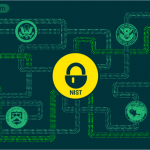
With the widespread adoption of workstream collaboration (WSC) platforms among businesses, it is essential to take into account to balance security against end-user productivity and collaboration.
Communication in the workplace keeps evolving, and workstream collaboration marks a rapidly growing market. WSC platforms and apps have changed the way teams interact by supporting modern workflows, accelerating innovation, enhancing productivity and engagement. Adopting a WSC platform, such as Slack or Mattermost benefits teams, both within and across organizations, by enabling faster access to relevant information, and integrating workflows and collaboration. These platforms and apps bring together chat, knowledge sharing, calls, bots, search and discovery functionality and top it all off with some useful integrations. They also drive competitive advantage and are being adopted by an increasing number of companies.
WSC platforms & security risks
However, in the age of data, WSC platforms and apps also create a new set of threat vectors and introduce inherent risks. While collaboration is the future of the digital workplace, the real-time sharing of unstructured data in these tools currently creates a gap in overall business security. The WSC platforms and apps are relatively simple for end-users to adopt, but monitoring and securing the collaboration environment is a more complex task. Some have basic built-in security capabilities, but many companies don’t realize that these may not be enough to adequately protect them from one of the most common security risks – accidental or intentional data leaks.
Workstream collaboration data often contains sensitive conversations and content; thus, most workstream services tout encryption, but that alone is not sufficient. Data privacy and data protection, whether we think about personally identifiable information (PII) or Intellectual Property (IP), is a major concern for businesses, especially in the light of the proliferation of data protection regulations on a global level such as GDPR, CCPA, LGPD, etc.
Companies have to protect confidential data to avoid reputational damage, costly fines, litigations, and loss of business. Sending sensitive information through workstream collaboration platforms can easily expose it or send it into the wrong hands, whether inside the organization or outside of it. The insider threat is very present with WSC tools like Slack or Mattermost, whether in the form of an employee accidentally sharing a customer database, intentional disclosure of company business plans, or Social Security numbers being transferred to the public cloud.
Security tips for WSC tools
The need to ensure that confidential information is kept private and there is no danger of data leakage is growing into a top priority for businesses of all sizes across industries. To protect data, it is vital to ensure that unique security concerns have solutions, as well as introduce protocols and procedures that are effective yet easy to implement.
Policies and procedures that can help reduce might include restrictions of guest access, tracking third-party applications, and lifecycle management. On the other hand, when choosing a WSC tool, organizations should be aware of the tool’s effectiveness and how easy it is for users to share data appropriately, in accordance with the policies. Personnel training is another vital step that can further reduce security risks. Companies should ensure that employees are aware of their data security policies and appropriate practices for data sharing.
How can a DLP solution help?
Data Loss Prevention (DLP) solutions with content-aware protection capabilities can provide companies using WSC tools an additional layer of security for sensitive data. After deploying such a solution, companies can block confidential data that is about to be shared. Some DLP software, such as Endpoint Protector, already have definitions for the most common types of protected data like PII, credit card numbers, source code, and regular expressions. They also offer the possibility of safeguarding data by file type or name or defining custom content to serve specialized needs.
DLP solutions can also have predefined profiles for different regulations such as GDPR, PCI DSS, and HIPAA and support organizations’ efforts to protect sensitive data that falls under the jurisdiction of these regulations. At the same time, due to the high number of predefined policies for personal information, companies can quicly build profiles for compliance with their local data protection regulations. Thus managing IP and PII, complying with different regulations becomes easier and more efficient.
Furthermore, as most WSC tools integrate with cloud storage and sharing tools like Dropbox, Google Drive, and Box, companies need to be able to filter the data that is being uploaded; otherwise, sensitive information might end up in the wrong hands.
Collaboration tools are gaining fast adoption in the enterprise, but without proper controls and checks, they can expose an organization to severe risks.
Download our free ebook on
Data Loss Prevention Best Practices
Helping IT Managers, IT Administrators and data security staff understand the concept and purpose of DLP and how to easily implement it.















